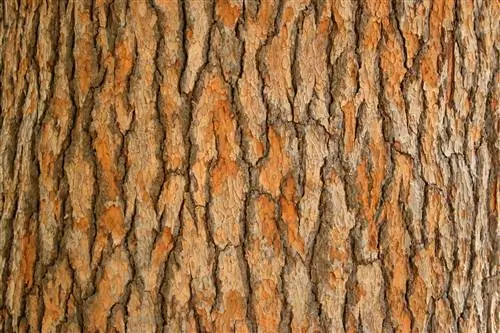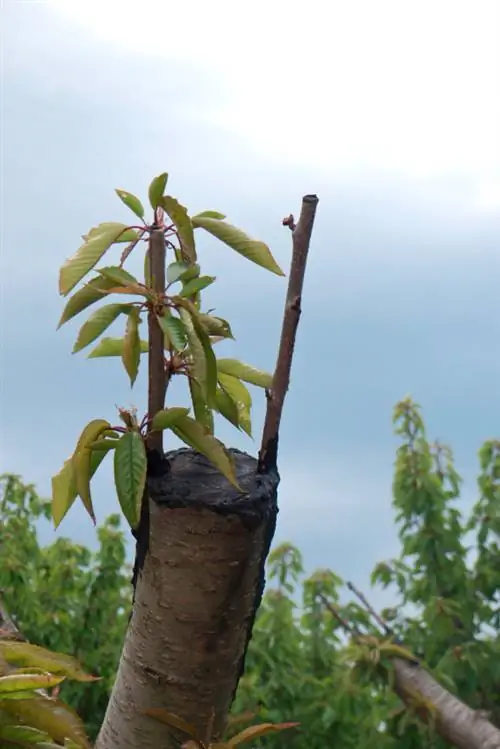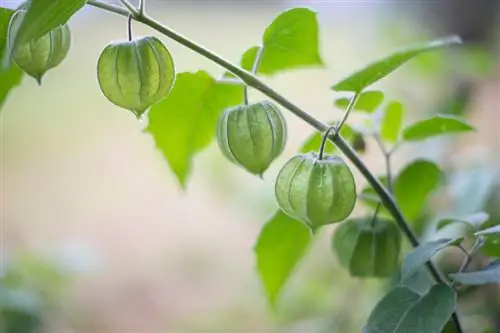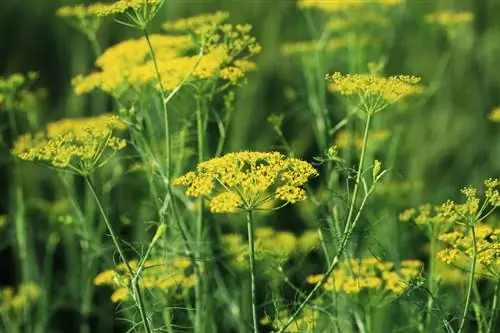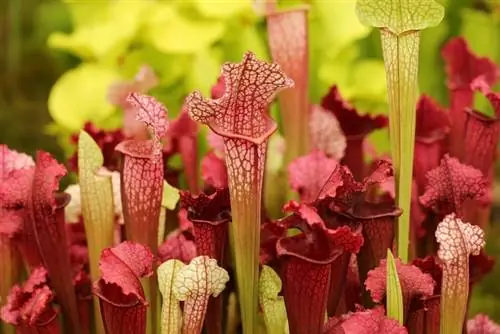- Author admin [email protected].
- Public 2023-12-16 16:46.
- Last modified 2025-01-23 11:19.
Tree bark is much more than just the finishing fabric of a tree trunk. In fact, fascinating processes take place in the bark that are important for the survival of a tree. Read interesting facts about the function of tree bark here.
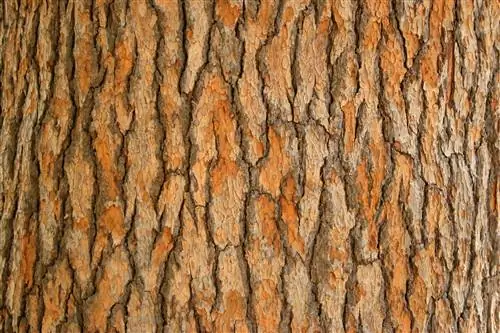
What is the function of tree bark?
Tree bark provides life-sustaining functions for the treeProtective functions Bark protects the wood core from frost, heat and moisture. Resin protects the tree from diseases and pests. Callus overflows wounds in the bark. Growth energy is transported in the bast between the bark and the cambium.
How is tree bark structured?
Tree bark consists from the inside out ofcambium,raffiaandbark Cambium is one thin layer of living tissue and is the only growth zone responsible for the growth in thickness of the tree trunk. Cambium cells form wood on the inside and bast on the outside. There is a lot of activity in bast because sugar compounds are transported in the tree. Dead bast cells gather to form the outer bark, the visible part of a tree's bark.
What tasks does tree bark perform?
Tree bark provides a vitalprotective function for the tree with this extensive distribution of tasks:
- Protection against external influences such as frost, heat, moisture and fire.
- Barrier function against diseases and pests through resin flow.
- Formation of wound wood (callus) after game browsing or frost cracks.
- Conduit for supplying roots, shoots and buds with growth energy.
Distinguishing feature bark
You can recognize trees by the texture of their bark. Jagged scaly bark is characteristic of sycamore maple, oak or pine. Striped bark is typical of arborvitae and poplar. Silver birches are easy to identify because of their smooth, black and white bark.
Can a tree survive without bark?
A tree trunk cannot survive without its barkIf bark, bast and cambium are missing, the wood is exposed to external influencesprotectionless. Without the cambium growth layer, thickness growth collapses. If a tree loses its bast, the transport of vital sugar compounds ends. A tree can repair the loss of individual pieces of bark by covering the wound with callus.
The cork oak (Quercus suber) occupies a special position. Here bark and bast are not firmly connected to cambium. Peeled bark is renewed from the remaining cambium.
Tip
Tree bark as food
A largely unknown function of tree bark is its use as a food source. In fact, bark is edible as long as it is not a poisonous tree species. The nutritious cambium tissue is suitable for consumption. In times of need, tree bark provides valuable vitamins, sugar and fiber. Tree bark is eaten boiled, fried, raw or dried and ground into flour for filling bark bread.

